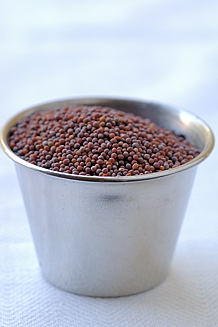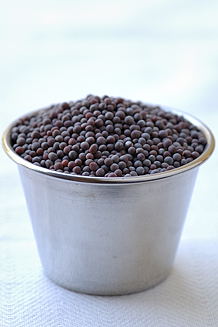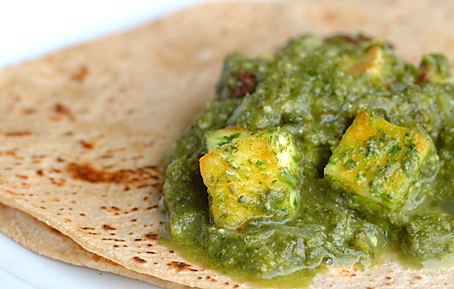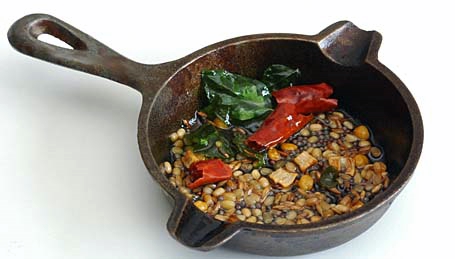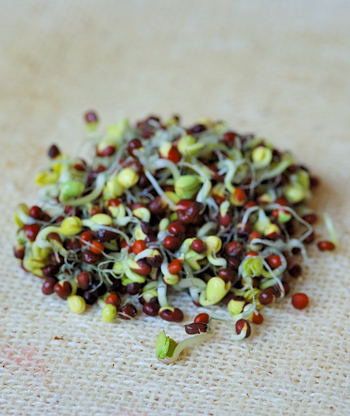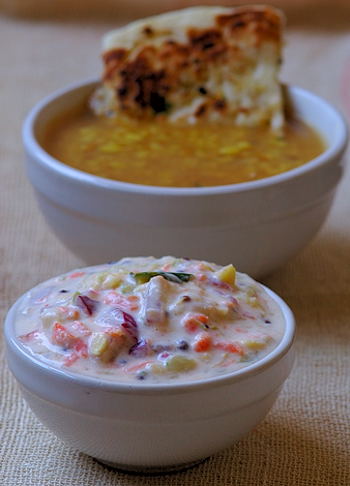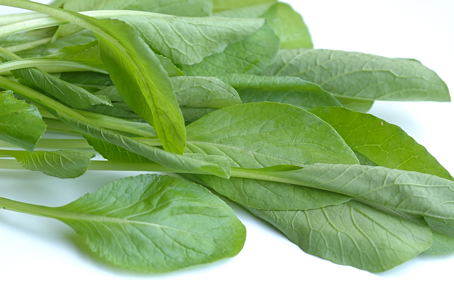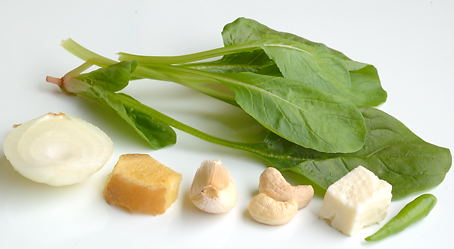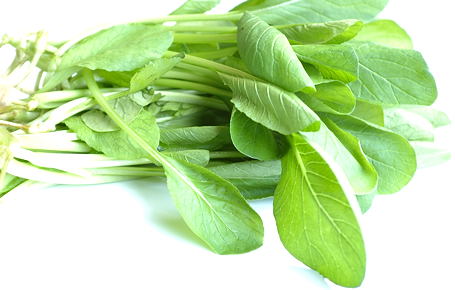Black-eyed peas, Mustard Greens with Matta Rice:
There are only few American dishes that I enjoy. One of them is Hopping’ John (black-eyed peas, greens and rice). This is an African-American dish that has made it to the “Hara’s Tara”. I like the combination, but the underlying flavor melancholy is inescapable. How to add a cheerful tone to blue notes. Well, how about a mrudangam beat. These thoughts led to a new recipe, which is an amalgam of both ingredients and method.
Black-eyed peas, mustard greens and Kerala matta rice cooked together with onions and tomatoes. And the dish is flavored with fresh coconut, peppercorn and nutmeg. Though it started out like musical elements spontaneously assembled during a play, the south-Indian improvisational context imparted an orchestra effect to good old African American tradition. Mine was a solo performance, and when the single audience showed up with a serving bowl saying “encore please”, some hopping smiles sure happened.
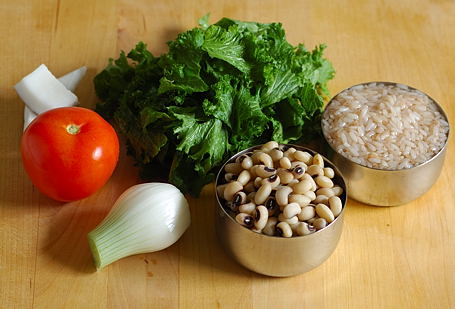
Lobia and Sarson with Matta Rice:
(for two adults for two meals)
1-cup black-eyed peas – soaked in water overnight, and cooked to tender
1-cup matta rice (or brown rice) – soaked in 3 cups of water for 3 hours
1 bunch mustard greens – leaves and tender stems, finely chopped
1 onion, and two ripe tomatoes – finely chopped
2 garlic cloves – finely chopped
For seasoning:
2 tablespoons fresh grated coconut,
1 teaspoon black peppercorn (this dish needs some heat)
½ teaspoon each – cumin and grated nutmeg
½ teaspoon each – turmeric and salt
½ inch piece of ginger
2 tablespoons of crushed jaggery
Take them all in a Mixer. Pulse few times, first. Then add half cup of water. Blend to smooth paste.
Heat a tablespoon of peanut oil in a big pot. Add and sauté garlic and onion to pale-red. Add tomatoes and sauté to soft. Add the mustard greens and cook until leaves start to collapse. Add the rice and the water it soaked in. Cover the pot and on medium heat, cook the rice until it’s al-dente or just tender. Now add the precooked black-eyed peas. And also the spice paste. Stir-in another cup of water if the dish looks too dry. Mix. Have a taste and adjust salt to your liking. Cover and simmer on medium-low heat for about 10 to 15 minutes.
Serve hot with papadums on the side. Makes a great tasting one-pot meal.
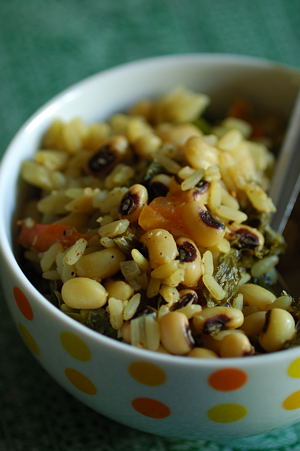
India Inspired Hopping John ~ Meal Today
